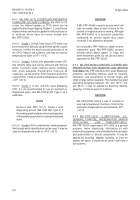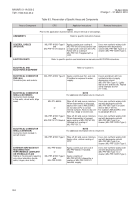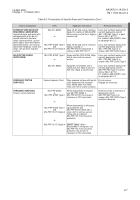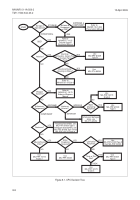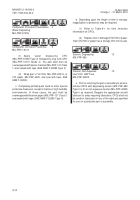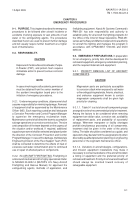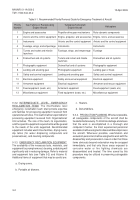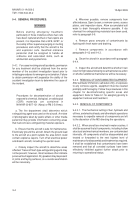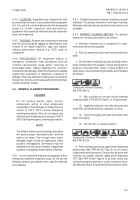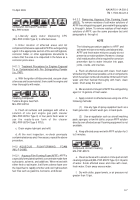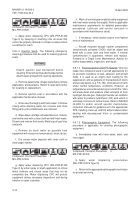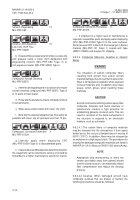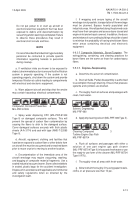TM-1-1500-344-23-2 - Page 158 of 240
9-4
NAVAIR 01-1A-509-2
TM 1-1500-344-23-2
15 April 2009
9-4. GENERAL PROCEDURES.
WARNING
Before starting emergency treatment,
particularly in those instances where fuel cells
have been ruptured and fuel or fuel vapors are
present, it is imperative that a GFE, GFET, or
the safety officer supervise purging or inerting
procedures and certify that the aircraft is fire
and explosion safe. Qualified ordnance
personnel shall be assigned to handle all
ordnance and associated items, such as
ammunition and pyrotechnics.
9-4.1. For cases involving aircraft accidents, permission
for any treatment shall be obtained from the senior
member of the accident investigation board prior to
initiating procedures for emergency reclamation. Failure
to obtain permission will jeopardize the ability of the
accident investigation team to determine the cause of
the incident.
NOTE
Procedures for decontamination of aircraft
exposed to chemical, biological, or radiological
(CBR) materials are contained in
NAVAIR 00-80T-121 (Navy) or FM 3-5 (Army).
a. The fire department shall determine which
extinguishing agent was used on the aircraft. A review
of photographs taken by public affairs or other media
personnel may provide information concerning areas
that had corrosive extinguishing material exposure.
b. Ensure that the aircraft is safe for maintenance.
Electrically ground the aircraft. Attach the ground lead
to the aircraft at a point outside the area which could
contain explosive vapors. Turn off all electrical power
and disarm aircraft, including the ejection seat.
c. Closely inspect the aircraft to determine areas
affected. Traces of foam type extinguishing agents may
not be present; however, moist residues often indicate
previous foam application. Dry powders may be present
in joints and faying surfaces, so a careful examination
will be necessary.
d. Wherever possible, remove components from
affected areas. Open, loosen, or remove covers, access
plates, and inspection doors. Allow accumulated salt
water to drain thoroughly wherever possible. If dry
chemical fire extinguishing materials have been used,
refer to paragraph 9-6.
e. Remove gross amounts of contaminants by
flushing with fresh water and draining.
f. Remove components in accordance with
paragraphs 9-4.2 and 9-4.3.
g. Clean the aircraft in accordance with paragraph
9-4.4.
h. Inspect the aircraft and determine whether it can
return to flight status following local maintenance action
or whether additional maintenance will be necessary.
9-4.2. REMOVAL OF CONTAMINATED EQUIPMENT.
After salt water immersion, salt water entry, or exposure
to any corrosive agents, equipment must be cleaned
promptly and thoroughly. Follow the procedures in this
chapter for decontaminating specific areas and
equipment. Refer to Table 9-1 for assigning priority to
equipment removal and treatment.
9-4.3. REMOVAL OF COMPONENTS.
9-4.3.1. The mechanical cutting of fuel, hydraulic and
oil lines, and electrical leads, and other drastic operations
necessary to expedite removal of components are left
to the discretion of the MO directing the operations.
9-4.3.2. When aircraft are involved in water crashes, it
shall be assumed that all components, including hollow
structural and mechanical members, are contaminated
internally. All components shall be disassembled and
treated or forwarded to the next highest level of
maintenance for disassembly and treatment as required.
It shall be established that contaminants have been
removed and that all corroded surfaces have been
effectively inhibited against further attack prior to
returning to operational status.
Back to Top

